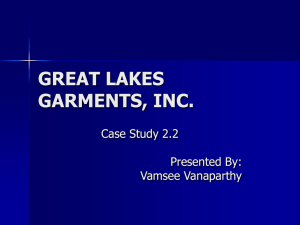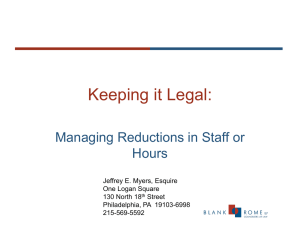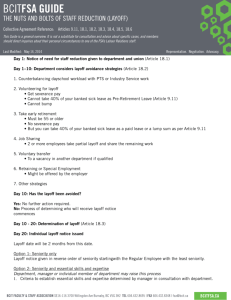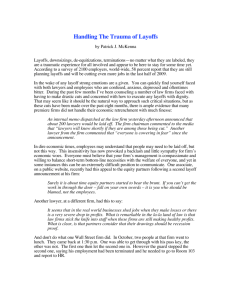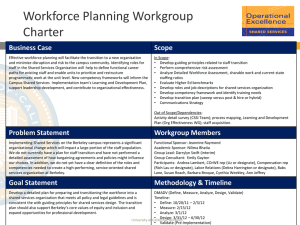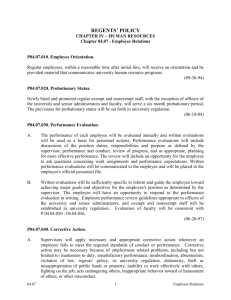Rapid Response Orientation, Slide Overview 756KB
advertisement
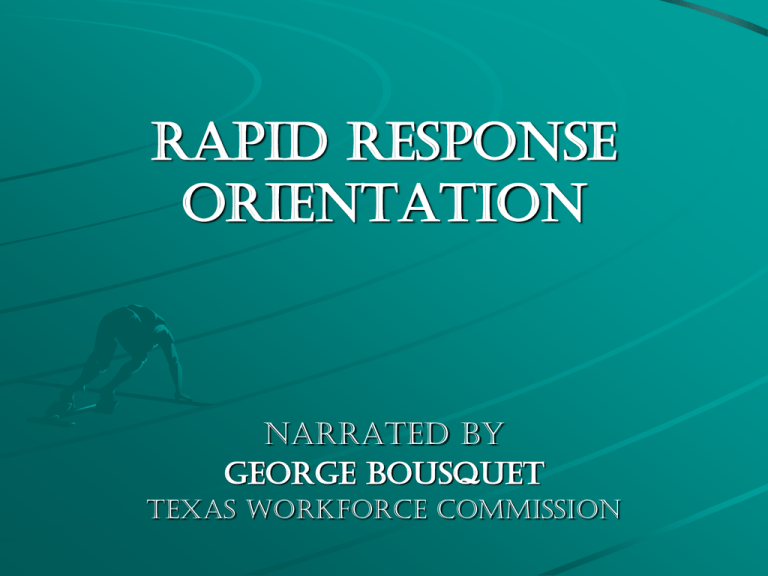
Rapid Response Orientation Narrated By George Bousquet Texas Workforce Commission Introduction Rapid Response is early intervention assistance to quickly transition dislocated workers to their next employment. Background Prior to 2002, Texas Workforce Development Boards applied directly to the Texas Workforce Commission for: • rapid response funding and • program expertise in worker dislocations from large layoffs and business closings. Background (cont’d) Currently, Workforce Development Boards are responsible for providing rapid response services using funds bundled into WIA budgets. It is critical that the Texas Workforce Solutions provide consistent services to Dislocated Workers throughout the State. Why Provide Rapid Response Services? Rapid Response services promote: • • • • local economic stability extended resources collaborative partnerships layoff avoidance. section i The Ten Principles of Rapid Response Timeliness The more quickly Rapid Response interventions begin, the more time workers have to prepare for re-entry into the workforce. Convenience On-site group services and meetings promote: • convenience • ease of access • familiar surroundings for workers. Customer Choice Customization enhances success. Customize services for: • • • • • time place location content duration. Consistent and Accurate Information To maximize the usefulness of information, make sure it is: • accurate • consistent • locally-driven • timely • specific to the work site • and that it includes non-job specific referrals to services and agencies. Leveraged Resources Rapid Response in-kind, cash, or tax credit resources may be combined with other available resources from the: • employer • union • community • economic development activities. Seamless Service Delivery Differences in programs and funding sources must be invisible to the customer. Coordination is the key to providing services through multiple organizations. Active Promotion To promote awareness and maximize the success of reemployment events and services, apply comprehensive, ongoing marketing outreach to: • employers • workers • organized labor • community groups. Layoff Aversion The Rapid Response team can coordinate layoff aversion strategies that: • help retain or save jobs • extend the range of tools and relationships with other programs and organizations • refer companies to other helpful entities. Layoff Aversion (cont’d) The focus of a layoff aversion strategy could be to: • help the company make changes to reduce or avoid layoffs • find a buyer to keep the workforce intact. Measurable Goals To ensure continuous improvement of Rapid Response activities, set measurable goals that identify when local programs: • are successful • have problems that require changes. Partnerships Involving additional partners in a Rapid Response event enhances your flexibility to meet the needs of a unique workforce. Some common partners are: • the local Job Center • Unemployment Insurance • Trade Adjustment Assistance (TAA) • local economic development agencies. Partnerships (cont’d) The appropriate involvement of a variety of other groups may also include: • vocational rehabilitation • child care agencies • mental health services • community-based organizations. section II Rapid response Services and processes Benefits of Rapid Response Rapid Response interventions result in: • • • • decreased absenteeism increased productivity less stress and acting out decreased workplace and domestic violence • other benefits. Authorized Services • Job Search • Stress/Change Management • Crisis Counseling • Financial/Debt Management • Labor Market Information • Job Fairs • Worker Transition Committees* • Worker Transition Centers* * Usually reserved for plant closures or large layoffs affecting 200 or more workers What Starts a Rapid Response? Two primary types of notices indicate the need for a Rapid Response intervention: 1. a Worker Adjustment and Retraining Notification Act (WARN Notice) sent to the Texas Workforce Commission 2. public notice in a newspaper or other media. WARN ACT The Worker Adjustment and Retraining Notification Act (WARN) is federal legislation that requires a 60- day notification of a layoff. The state does not interpret this complicated law. If requested to do so, refer the person to a labor attorney. Layoff Reporting The Board Rapid Response Coordinator reports the layoff by: • completing a “Layoff Notification Form” • sending the form to Layoff Notification Central • submitting a more detailed notification following the “Management On-site Meeting” • receiving an e-mail verification after the state is notified. Management On-site Meeting To secure the employer’s participation in a Rapid Response intervention: • contact employer within 48 hours of notification • schedule an on-site meeting within 5 working days. Who Should Be There? The following stakeholders and representatives should attend the “Management On-site” session: • • • • Representatives from the company Board Rapid Response coordinator Appropriate contractor staff Unemployment Insurance field representative • Labor Union Official or other authorized worker representatives. Who Should Be There? (cont’d) If workers are represented by a labor union, be sure to invite those officials to the meeting. If union officials are unable to attend the Management On-site meeting, schedule a separate meeting to present the same information that management received. Management On-Site Meeting Agenda Purpose of the on-site meeting is to discuss and resolve: • the description and scheduling for orientation meetings and workshops • whether the company has hired an outplacement firm to provide services • company-provided services the state must not duplicate Management On-Site Meeting Agenda (cont’d) • whether TAA is connected to the layoff • Worker Transition Committee/ Transition Center for plant closures or layoffs when over 200 workers are affected • the Mass UI Claims option. Orientation Meetings During Orientation meetings: • UI Field Representatives provide an overview of benefits • workers complete the Rapid Response survey and registration forms • the coordinator announces that workshops will follow results of the survey. Service Delivery Service delivery follows the “Ten Principles of Rapid Response” and are provided On-Site and on the clock if possible. The typical 16 hours of group workshops includes : • Job Search and Resume Writing • Stress and Change Management • Labor Market Information (LMI) • Financial Management. Worker Transition Committee (WTC) The purpose of the WTC is to gauge the effectiveness of service delivery. It is not a negotiating platform for labor disputes. Worker Transition Committee (cont’d) The successful WTC is: • composed of representatives from workers and management • chaired by a “neutral chair” nominated by the County Judge or comparable authority • trained in useful skills and information such as: – Communication Skills – Effective Listening Skills – Purpose of the Committee Worker Transition Center (WTC) Although a WTC is more highly preferred and effective on-site, services may be provided either on or off-site. Worker Transition Center (cont’d) The WTC should be configured and staffed as a mini one-stop career center featuring: • • • • computers copy and fax machines telephones job postings. Documenting Rapid Response Services To document Rapid Response Services: • Open program detail in TWIST using the Rapid Response tracking number provided by the state • Maintain accurate case notes on services attended by individuals. Funding Rapid Response In 2002, Local Boards assumed responsibility for Rapid Response in their areas. Funding is available through: • Rapid Response funds bundled into the Board’s annual WIA contract • requests for additional funding that can be tied to contract expenditures. Transitioning Workers to Workforce Investment Act (WIA) Workers who have a distant layoff date are eligible for retraining services six months prior to that layoff date. Workers’ WIA eligibility begins with the Rapid Response event. Survey workers to determine who may be interested in WIA Dislocated Worker or Adult services. Rapid response orientation PREPARED BY The texas workforce commission A collaboration of the Contract Management Department George Bousquet, Content Expert Rebecca Allen Jackson, Project Sponsor and the Training and Development Department Carolyn Vidrine, Live Meeting Specialist Saundra Kirk, Curriculum Writer
